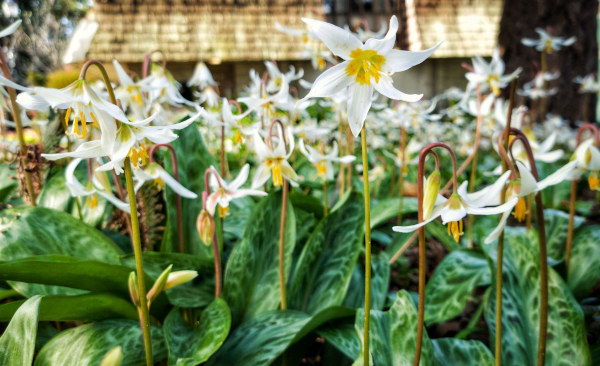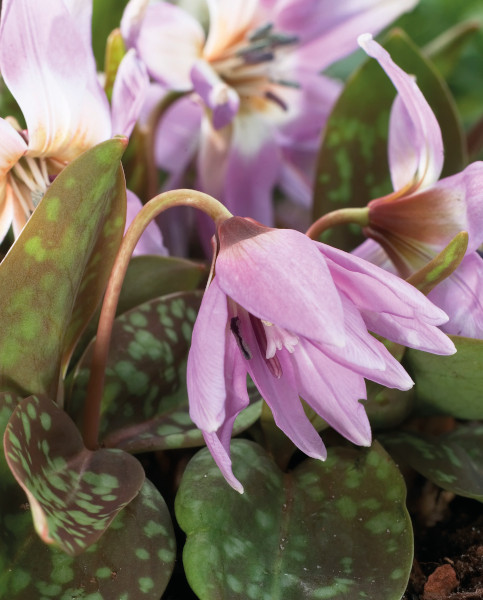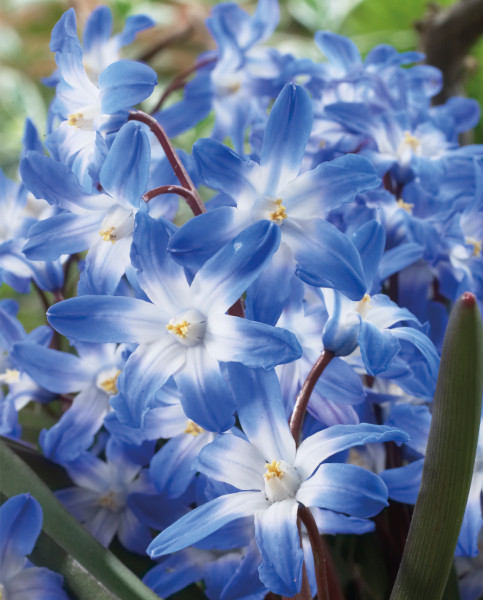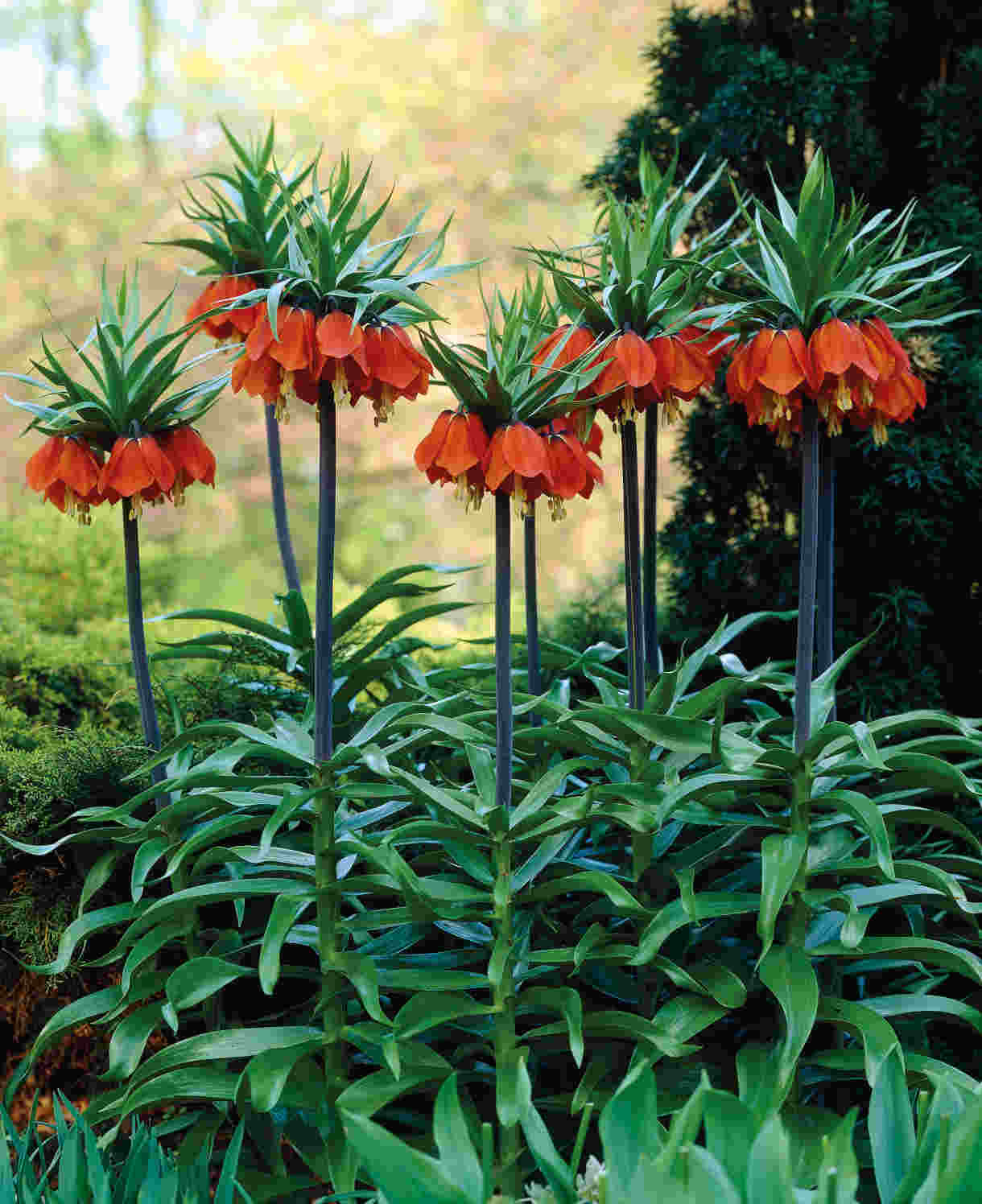How to grow Erythronium
Elegant Erythronium, native to California, are bulbous easy-going perennials that are certain to brighten up a shady spot, whatever your style of garden.
Large, glossy ovate leaves and bare stems fashion star-shaped flowers with curved petals. Flourishing profusely during the spring, these plants look fantastic as part of your borders, under-planting for roses and shrubs, in a wildflower meadow, cottage garden or part of a modern plant scheme in containers. Known as Dog’s Tooth Violet, because of the shape of the bulb, looking like a canine tooth, they are reliably hardy and will naturalise well in the right conditions.

Key Information
Soil pH
Position
Hardiness


Where & when to plant Erythronium
Erythronium bulbs are long, pointed and white are best planted in fertile, humus rich, moist but well-drained soil, around 15cm deep with the pointed end upwards. You may wish to add organic matter or horticultural grit to you soil to give the bulbs the best conditions.
You may wish to plant Erythronium under deciduous trees or shrubs where they are in a position of part shade and protected from adverse weather conditions – this is where they will thrive best. Be sure not to plant near delicate plants and shrubs as Erythronium can multiply and spread if happy in its location.
How to plant Erythronium
For a natural display, grow in random groups. Gently toss a handful of bulbs onto the area as if you were skimming a stone, and plant them where they fall, as long as they are no closer than 10cm to each other to allow room to spread.
Dig a hole around 15cm deep so that the top of the bulb is around 10cm below the soil surface. Place a bulb in each hole, pointed end upwards and back fill in with soil. Alternatively, if growing in a pot, use good quality multi-purpose compost and plant as above, although a little closer as long as they are not touching each other or the side of the pot.
After planting, ensure that you water your Erythronium thoroughly to settle the soil and the bulbs. Give the bulbs the best conditions by adding humus or leaf mould.

What to plant with Erythronium
Erythronium make an eye-catching display when planted ‘en masse’ as a single genus, but also when mixed with other shade lovers. Some of our favourite planting companions, are Chionodoxa, Fritillaria meleagris and Muscari.



How to care for Erythronium
After planting, ensure that you water Erythronium thoroughly to settle the soil and during its first year of growth. After the flowering period, leave the foliage in place – there is little or no need to prune. Throughout active growth ensure that you water your plants when necessary, increasing the volume in periods of drought.
It is possible to propagate Erythronium by division after the flowering period. This should be undertaken every four years.




